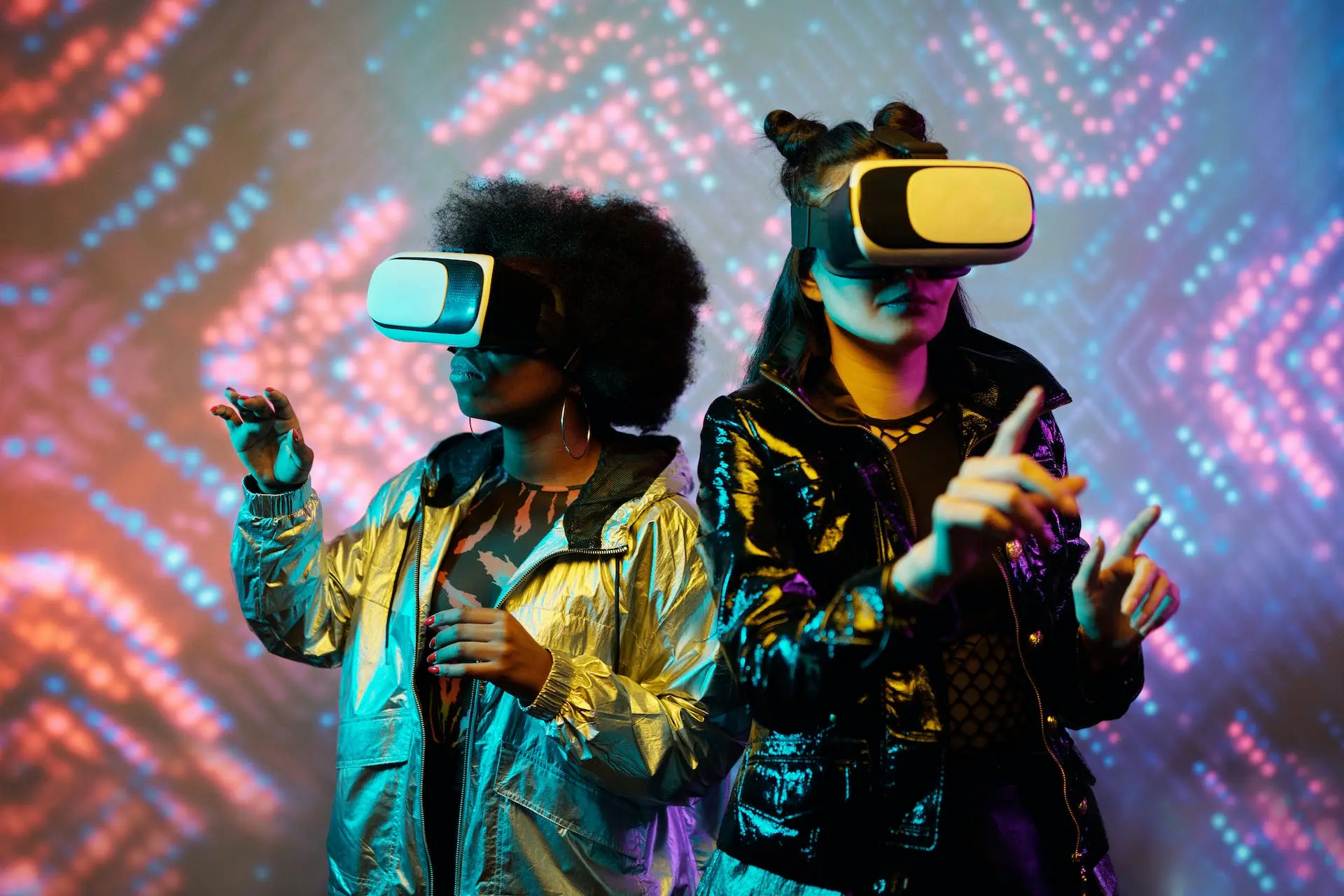Introduction
In recent years, Virtual Reality (VR) has gained significant momentum across multiple industries, and the music sector is no exception. The combination of immersive technology with the dynamic world of music is opening up new avenues for artists, fans, and the overall music experience. VR offers limitless possibilities, transforming how music is produced, performed, and experienced. In this article, we will delve into the ways VR is revolutionizing the music industry and analyze its impact through different perspectives.
What is Virtual Reality and How Does it Work?
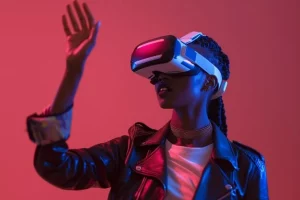
Virtual Reality (VR) refers to a computer-generated simulation that allows users to interact with a three-dimensional environment using specialized equipment, such as VR headsets and controllers. The immersive nature of VR allows users to experience a sense of “being there” in a virtual world, making it ideal for applications like music performances, virtual concerts, and even music creation. In the music industry, VR technologies are being used to enhance fan engagement, create immersive live performances, and provide innovative ways to produce music.
The Rise of Virtual Reality in the Music Industry
Virtual Reality (VR) is becoming a bigger part of the music industry. With the growth of technology, more artists, producers, and fans are using VR to experience and share music in new ways. Virtual concerts, music production, and even learning about music have all been transformed by VR. The rise of VR in music started with the need for more engaging and creative experiences, and today, it’s offering endless possibilities.
How VR is Changing Music Videos
Virtual Reality is also changing how music videos are made and experienced. Traditional music videos are usually shot in two dimensions, with a focus on the song and visuals. However, VR music videos offer an entirely new perspective. Fans can experience the music video in 360 degrees, allowing them to feel like they are part of the story. This new way of viewing music videos can bring fans closer to the music and the artist. Some artists have already started creating VR music videos, where the fans can explore different angles of the video, giving them more control over what they see.
Benefits of Virtual Reality in Music
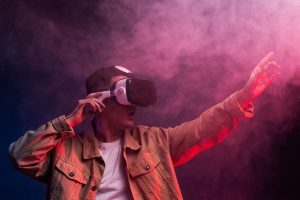
Virtual Reality brings many benefits to the music industry. For artists, it makes performing and connecting with fans easier, especially for those who cannot attend live shows. Fans can attend concerts from their own homes, no matter where they are in the world. VR also allows for more interactive and immersive experiences that help fans feel closer to their favorite musicians. For music producers, VR offers new tools for creating sounds and music in ways that were impossible before, helping artists be more creative.
- Accessibility: Fans from all over the world can attend concerts, regardless of their location.
- Immersion: The 360-degree experience allows for a more intimate and engaging connection with the performance.
- Interactivity: VR platforms often enable fans to interact with the environment or even influence certain aspects of the performance.
The Role of Virtual Reality in Music Production
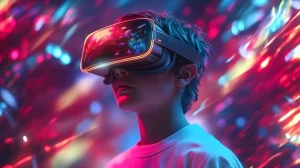
Virtual Reality is changing how music is made. It allows musicians to step into virtual studios, experiment with sounds, and collaborate in real-time with others from different parts of the world. VR tools make it easier to try new sounds, visualize music, and even simulate playing instruments. This technology helps artists and producers think outside the box and create music in an entirely new way.
The Impact of Virtual Reality on Music Performance
One of the most exciting ways VR is changing the music industry is through live performances. Traditionally, fans could only experience concerts through physical attendance or through media like TV or online streams. However, VR allows fans to attend concerts virtually, giving them an immersive experience that feels as if they are actually present at the venue. VR concerts can simulate a 360-degree environment, enabling fans to “walk” around the stage, interact with other virtual attendees, and get up close to their favorite artists in ways that were previously unimaginable.
Virtual Concerts and Fan Engagement

Beyond traditional concerts, VR is creating entirely new ways for fans to engage with their favorite artists. Virtual concerts and meet-and-greet sessions are becoming increasingly popular, allowing fans to experience performances in their own homes while still feeling connected to the event. These virtual experiences can also include augmented reality elements, where the artists appear in a fantastical or creative environment that enhances the music.
For example, artists can host virtual concerts in customized settings, transforming a stage into a surreal, futuristic landscape. Fans can also engage with artists through virtual social events, like listening parties, Q&A sessions, and backstage tours—all made possible by VR technology.
Key Advantages of Virtual Concerts:
- Global Reach: Virtual concerts can reach a wider audience, offering performances to fans who cannot attend physical shows.
- Reduced Costs: Artists and production teams save on venue, travel, and logistics costs.
- Enhanced Fan Experience: Fans can interact with virtual versions of their idols and experience concerts in new, creative ways.
VR’s Role in Music Production
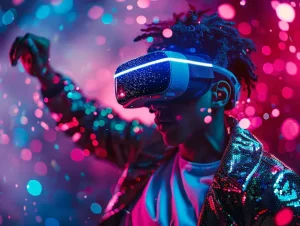
In addition to live performances, VR is also making waves in music production. Artists can use VR technology to create virtual studios and collaborate in immersive 3D environments. These digital studios allow for greater creative freedom, enabling musicians to explore new ideas in innovative settings. For example, a producer can “move” around different virtual soundscapes, manipulating the environment to generate unique sounds, while musicians can collaborate from different parts of the world in real time.
Moreover, VR can simulate instruments and sound tools, providing musicians with a fully interactive experience that enhances the production process. Virtual reality music software and tools are quickly gaining popularity, with platforms like Oculus Studio and TheWaveVR providing musicians with new ways to interact with music in virtual environments.
The Benefits of VR in Music Production:
- Creative Freedom: VR tools enable musicians to experiment with sound and virtual environments in ways that traditional tools cannot.
- Remote Collaboration: Musicians and producers from different locations can work together in real-time, overcoming geographical barriers.
- New Sound Experiences: The immersive nature of VR allows for the creation of entirely new soundscapes, pushing the boundaries of music production.
How Virtual Reality is Enhancing Music Education
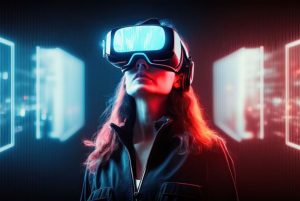
Beyond performance and production, VR is also transforming music education. VR can simulate a music classroom where students can engage with interactive lessons, explore music history, and practice their instruments in virtual environments. For instance, aspiring musicians can learn how to play different instruments through VR simulations, improving their skills in a risk-free setting.
Music education programs can also use VR to recreate the experience of attending concerts, providing students with a deeper understanding of musical performances. VR can even simulate historical musical moments, enabling students to witness iconic performances from the past, bringing them closer to the music and the culture behind it.
Key Benefits of VR in Music Education:
- Hands-On Learning: Students can practice musical instruments and techniques in a virtual environment, enhancing their learning experience.
- Immersive Learning: VR allows students to experience music history and culture firsthand, making learning more engaging.
- Access to Resources: Students can access a wealth of virtual music lessons and performances, enhancing their educational journey.
More Access for Fans Everywhere
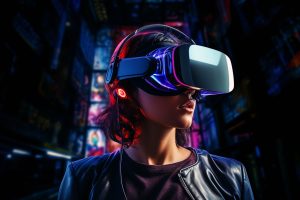
VR concerts are breaking down barriers for music fans. People who live in different parts of the world or can’t afford to travel to live events no longer have to miss out on their favorite shows. Virtual concerts allow anyone with a VR headset to enjoy the music and atmosphere of a live performance. This is especially important for artists who want to reach global audiences without the need for expensive tours or travel. VR makes it possible for music lovers everywhere to join in the experience.
Challenges of Using Virtual Reality in Music
While Virtual Reality has many advantages, it also comes with some challenges. For one, the equipment needed to experience VR, like headsets and specialized software, can be expensive. Not everyone has access to this technology, which limits the reach of VR experiences. There’s also the need for more content, as creating high-quality virtual concerts or music production tools takes a lot of time and effort. Additionally, some people may feel uncomfortable using VR for long periods, which could affect its use in the music industry.
The Future of Virtual Reality in the Music Industry

As VR technology continues to evolve, its influence on the music industry is expected to grow even stronger. The potential for VR to create immersive, multi-sensory experiences for music fans is limitless. In the future, artists may host live performances in fully virtual worlds, where everything—from the stage design to the environment—can be customized. Virtual reality could also provide opportunities for fans to experience interactive narratives where they can influence the music or the concert experience.
As VR technology becomes more accessible and affordable, it will likely democratize the music industry, enabling emerging artists to perform for global audiences without the need for expensive equipment or travel. VR could be the next big step in how we experience live music, collaborate in the studio, and learn about music.
Comparative Analysis: VR vs. Traditional Music Experiences
To better understand how VR is reshaping the music industry, let’s compare it with traditional music experiences.
| Feature | Traditional Music Experience | Virtual Reality Music Experience |
|---|---|---|
| Accessibility | Limited to physical venues or broadcasted events | Can be accessed globally from home |
| Interactivity | Limited fan engagement (audience interaction mostly through social media) | Fans can interact in real-time with virtual environments and artists |
| Cost for Artists | High (venue, travel, and setup costs) | Lower (eliminates venue and travel costs) |
| Immersion | Audience views performances from a single perspective | 360-degree immersive experiences, multiple viewing angles |
| Fan Engagement | Limited to concert attendance or watching online | Virtual meet-and-greets, backstage access, and fan-driven events |
Conclusion
Virtual Reality is undoubtedly changing the way we experience and interact with music. It offers exciting new possibilities for artists, producers, and fans alike, enabling more accessible, immersive, and interactive music experiences. From virtual concerts to music production and education, VR is paving the way for a future where music and technology collide in groundbreaking ways. The music industry has only scratched the surface of VR’s potential, and as technology advances, the possibilities will be endless.

